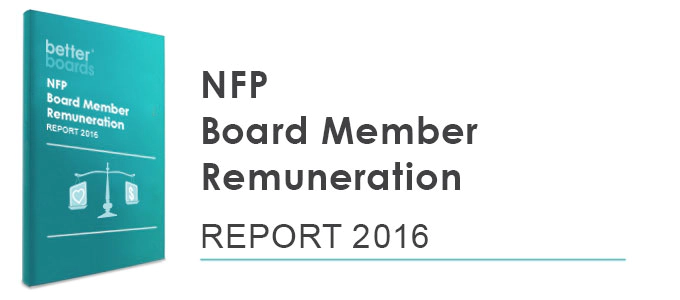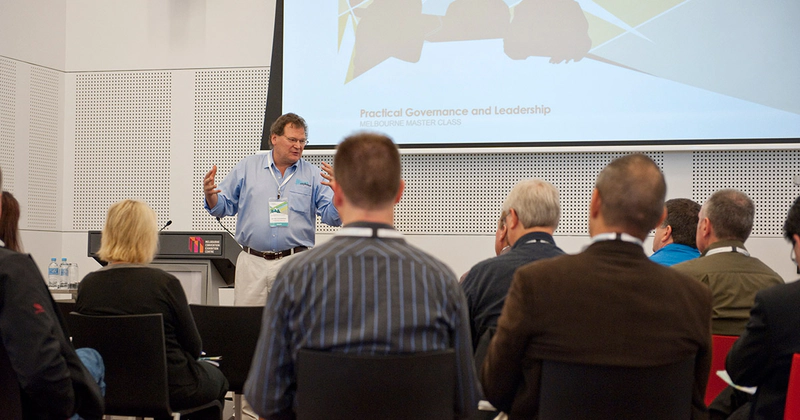governance
Board Fundraising Check-Up
Published: September 12, 2016
Read Time: 5 minutes

Not-for-profit boards are under increasing pressure from the press and regulators to ensure the propriety of their fundraising practices. The Shane Warne and E.J. Whitton Foundations are simply two of the latest examples where boards are asked to explain their approach to raising and distributing funding.
If you have been thinking about reviewing your own fundraising practices, we have put together a series of eight points to guide your review.
1. Set realistic targets
Nothing accelerates the slide into questionable practices like unrealistic goals. Fundraising targets proposed by management (or consultants or contractors) need to be realistic and reflect your context. Established, high profile charities are far more likely to be able to develop new sources of fundraising quickly than a newer or less popularly supported organisation. Be cautious about plans, particularly plans from those outside the organisation, that promise instant success; if a plan looks too good to be true, it probably is. Pay particular attention to the assumptions that underpin any goal or target.
2. Align your fundraising with your strategic goals
Your fundraising plans should align with your strategic direction. A strategic plan based on new buildings or facilities will likely require fundraising plans that emphasise major gifts or grants. Alternatively, a strategic plan focused on consolidating existing programs and efficiency gains may require a fundraising plan focused on improving average gift size as opposed to increasing donor numbers.
Each of your fundraising plans will likely have different return on investment (ROI) profiles and will need to be evaluated over different time periods. Thus, you may need to monitor different performance measures over different periods of your strategic (and supporting fundraising) plans.
3. Test the implementation detail
While the board should be careful not to step over the line into management, it is entirely appropriate to ask how your organisation seeks donations, particularly when embarking on a new strategy and/or using fundraising contractors. How do you monitor the representations and actions made on behalf of your organisation? Is this how you want your organisation to be represented? Some questions for you to ponder include:
- How will you ensure that face-to-face street or door-to-door collectors are respectful and do not create a public nuisance?
- Do you have policies about bequest solicitation when your organisation or its representatives may be in a position of influence over the donor or their family, for example a care or health provider?
- Do you have a robust complaints policy and system of review, for example when families contest a bequest made to your organisation?
4. Play the long game
In the case of donations, it is often necessary to balance short and long term fundraising requirements. Good boards are conscious of the importance of the long term and, in the case of giving, will often monitor donor retention very closely. Sales-driven approaches to fundraising may produce a short-term bounce, but it can often be at the cost of long-term donor relationships. Instead, you might like to evaluate results more like a retirement or savings strategy (i.e. over longer periods). The key for most successful not-for-profits is donor lifetime value and, in these circumstances, churning donors is costly.
5. Monitor the right things
Fundraising performance is best measured with an appropriate balance of non-financial and financial measures. For example, if your plan calls for a rapid expansion in active donor numbers, then new donor acquisition costs are best measured against the average “whole of life” donor value in the existing support base, rather than on the first donation. Alternatively, if the fundraising plan calls for an increased emphasis on the organisation’s bequest program, you might measure the number of donor-initiated enquiries generated by the program. Simply measuring the value of the bequests received in a single year is unlikely to be fit for purpose.
6. Understand legislative requirements
Complying with the fundraising and charitable gaming regulations of each state and territory where you operate is no easy task. The regulatory muddle that currently exists for a national organisation is further complicated when websites and social media can make it is easy to fundraise across jurisdictions without stepping a foot across the border. If this is the case, your fundraising may fall under the regulation of all jurisdictions and, if so, are you sure about what you are doing in this regard? If your organisation sells, buys or swaps donor lists, has the board considered how to responsibly manage the risks associated with such activities including a policy and plan to monitor compliance?
7. Manage expectations transparently
Consider how you report fundraising in your annual report to donors, members and the public. Some questions to ask of the preparers are:
- If we fundraise in New South Wales have we satisfied the specific accounting requirements of that jurisdiction as well as any other jurisdictions applicable?
- Have we educated members and donors in the narrative of the report about our fundraising strategy and why it needs to be measured in years as an investment?
- Do any of the fundraising claims mislead members and donors?
One way you can do this is by ensuring you are on the contact list for mail, telephone and social media fundraising solicitations. If you are uncomfortable with any aspect of the solicitation, then seek clarification. Some examples that should make you uncomfortable are statements like:
- “100 % of the donation goes straight to the cause.” Is that really the case?
- “Take a raffle ticket and we will send your tax deductible receipt in the mail.” Raffle contributions are not tax deductible gifts.
8. Your message should not overtake your mission.
Organisations can all too easily enter a “starvation cycle” when concern with funders’ perceptions of overheads/marketing leads them to cut too deeply into these important areas. Where there is competition for funding dollars based on funder perception of overheads, it is easy to develop an unrealistic view of overheads which drives costs down at the expense of investment in infrastructure and capacity. It can lead to a choice between starving your infrastructure, fudging the numbers, or taking your chances that the donor will not care about your overhead costs.
This article was written by Gavin Nicholson and Myles McGregor-Lowndes and was originally published in the Better Boards Conference Magazine.
Share this Article
Recommended Reading
Recommended Viewing
Author
-
Associate Professor
Queensland University of Technology
- About
-
Gavin is an experienced director, governance researcher and board consultant. He has provided advice on corporate governance and strategy to listed and large public companies, government owned corporations, statutory authorities, not-for-profit organisations and local government. Gavin heads several large research programs aimed at understanding how to help boards make better decisions. He has published extensively in a range of leading journals in his field and currently serves on the editorial board of Corporate Governance: An International Review and co-authored a number of best-selling books with Prof Geoff Kiel including the practitioner-focused title “Directors at Work”. Gavin is an active director and at the time of writing Chairs the board at Cannon Hill Anglican College (CHAC).
Found this article useful or informative?
Join 5,000+ not-for-profit & for-purpose directors receiving the latest insights on governance and leadership.
Receive a free e-book on improving your board decisions when you subscribe.
Unsubscribe anytime. We care about your privacy - read our Privacy Policy .










